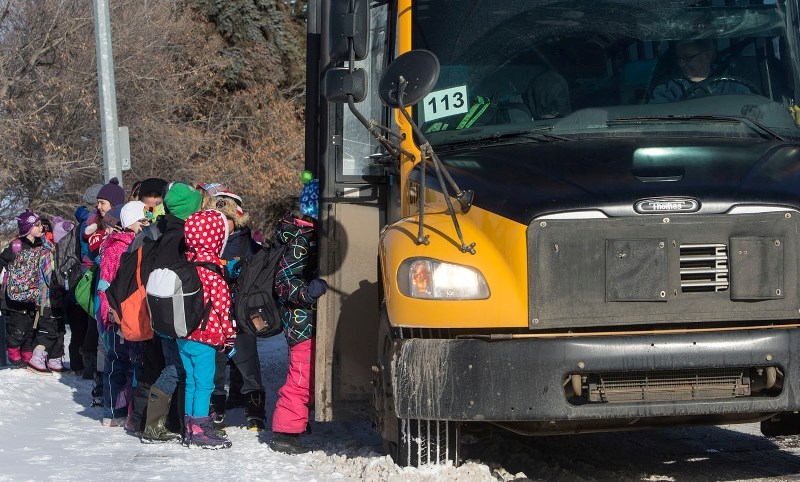A report that encourages more students to walk, bike and bus to school instead of being driven by parents was approved at council on Monday.
The Safe Journeys to School report was more than a year in the making.
Prompted by the death of Thomas Wedman who was struck and killed by a school bus in fall 2013, the massive report looks at both city-wide and site specific recommendations to improve safety for students travelling to school, whether they’re going by bus, car, walking or cycling.
An action plan on the recommendations that fall within the city’s authority will be delivered to council by June.
The 864-page report takes the feedback gathered through public meetings at every school, online surveys, student surveys and parent surveys, along with input from stakeholders such as the RCMP and school staff, into account when making its recommendations.
The school specific recommendations include all 26 currently existing schools in St. Albert and suggestions for two schools that haven’t been built yet.
Coun. Tim Osborne led the joint public steering committee for the creation of the report, and said the recommendations bring forward tangible opportunities to improve school safety.
But the report’s existence won’t make those improvements happen, he said. The recommendations need to be implemented.
“It requires a commitment to making this a priority,” Osborne said. “No single entity can make these changes happen.”
Osborne also said he thinks a long-term school traffic safety committee should be established.
Council’s hoping to see some costs attached to the action plan when the plan is presented.
Mayor Nolan Crouse said while he’s looking forward to seeing that plan, he wants to know what policies or other standards need to change as a result to make sure the effects of the report are long term.
Raheem Dilgir, president of TranSafe Consulting Ltd., the lead consultants on the project, outlined the eight city-wide strategies recommended to make student travel safer.
The principles are promoting more walking and cycling to school, shifting from private vehicles to bus use, managing speeding, preparation for winter conditions, enhancing pedestrian crossing facilities, siting and planning school facilities well, optimizing drop-off and pick-up areas and school traffic safety governance.
The recommendations suggest a lead for each improvement, like the school district, city, RCMP or the individual school as appropriate. There’s also a timeline attached, but the report notes that is money-dependent rather than prioritized by risk-level.
Examples are items like providing school area signage and marking crosswalks at Robert Rundle Elementary or consolidating clutter of on-site signs at the parking lot at Leo Nickerson Elementary School.
The strategies and recommendations also identify whether or not the solution can be achieved through engineering, education, enforcement or encouragement.
Council was supportive of the report moving forward.
Some councillors noted the statistics that show a high number of people driving their children instead of the students walking or cycling, or even using the bus.
“There’s quite a few people who are choosing to drive,” Coun. Gilles Prefontaine said, wondering how to change the behaviour.
Coun. Sheena Hughes said she wished the recommendations had included lowering the distance thresholds for school bus fees as a way to get more students to take the bus.




